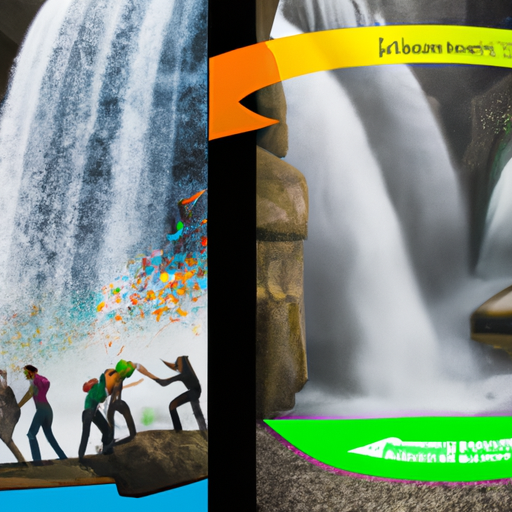Unraveling the Key Distinctions: What is the Difference Between Waterfall and Agile Model?
When it comes to software development methodologies, two popular approaches that often come up in discussions are the Waterfall model and the Agile model. While both methodologies aim to achieve successful project completion, they differ significantly in their approach, structure, and flexibility. In this article, we will delve into the key distinctions between the Waterfall and Agile models to help you understand which one might be more suitable for your project.
The Waterfall Model
The Waterfall model is a traditional and sequential approach to software development. It follows a linear and structured process, where each phase is completed before moving on to the next. The phases typically include requirements gathering, system design, implementation, testing, deployment, and maintenance. Once a phase is completed, there is no going back, making it difficult to accommodate changes later in the development cycle.
This model is often compared to a waterfall, as progress flows steadily downwards through each phase. It is highly structured and requires extensive planning and documentation upfront. The Waterfall model is best suited for projects with well-defined requirements and a stable scope, where changes are unlikely to occur.
The Agile Model
In contrast to the Waterfall model, the Agile model is an iterative and flexible approach to software development. It emphasizes collaboration, adaptability, and continuous improvement. Agile projects are divided into short iterations called sprints, typically lasting one to four weeks. Each sprint involves planning, development, testing, and review, allowing for frequent feedback and adjustments.
Agile methodologies, such as Scrum and Kanban, prioritize customer satisfaction and value delivery. They encourage cross-functional teams to work closely together, promoting transparency and effective communication. The Agile model embraces change and welcomes evolving requirements, allowing for flexibility and quick response to market demands.
Key Differences
1. Approach: The Waterfall model follows a sequential and linear approach, while the Agile model is iterative and incremental.
2. Flexibility: The Waterfall model is less flexible and does not easily accommodate changes once a phase is completed. In contrast, the Agile model embraces change and encourages adaptability.
3. Planning: The Waterfall model requires extensive upfront planning and documentation, whereas Agile focuses on adaptive planning and continuous improvement.
4. Feedback and Collaboration: The Waterfall model has limited opportunities for feedback and collaboration, while Agile promotes frequent feedback and close collaboration among team members.
5. Risk Management: The Waterfall model has a higher risk of late-stage failures due to limited testing opportunities. Agile mitigates risks by incorporating testing and feedback throughout the development process.
6. Time and Cost: The Waterfall model is more predictable in terms of time and cost estimates, while Agile allows for flexibility but can be more challenging to estimate accurately.
Conclusion
In summary, the Waterfall and Agile models are two distinct approaches to software development, each with its own advantages and disadvantages. The Waterfall model is best suited for projects with well-defined requirements and a stable scope, while the Agile model is ideal for projects that require flexibility, adaptability, and frequent feedback. Understanding the key distinctions between these models will help you make an informed decision about which approach is most suitable for your project’s success.




